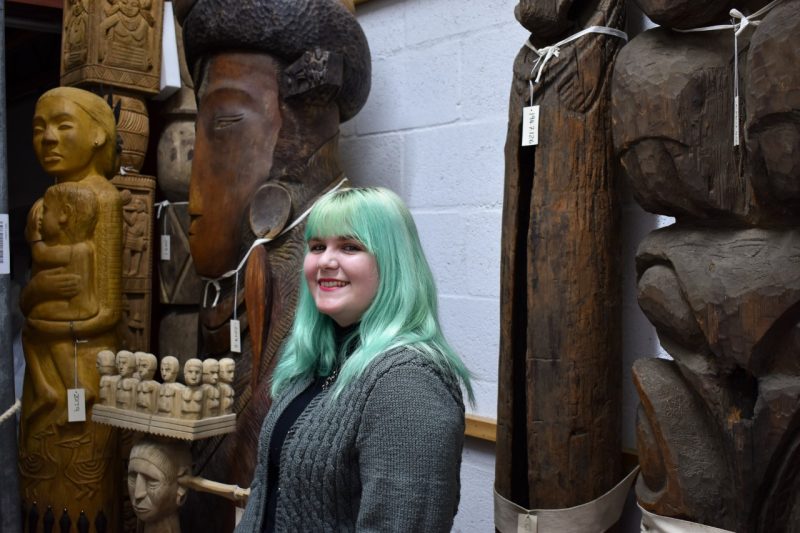The Museum of Archaeology and Anthropology (MAA) cares for a collection spanning the whole world, but sometimes all that is known about an object is that it came from somewhere on Earth. The Stores Move project is working through five large ‘miscellaneous’ boxes, filled to the brim with mystery and intrigue. Samantha Daisley describes her work on these boxes, and some of the amazing discoveries.
The ‘miscellaneous’ boxes contain objects that have lost their original identification numbers, are fragments of other objects, or have simply been incorrectly boxed. Some of these objects will be successfully identified, and others will join the ‘World Unprovenanced’ collection. ‘World Unprovenanced’ brings together objects which can’t be easily identified as coming from a specific continent, but we hope by documenting them, we will be able to increase their chance of one day being identified.
The first stage after opening the boxes is to sort through them. Due to the large number of objects and fragments present, this can initially feel quite overwhelming; some of the fragments clearly belong to museums objects but others might belong to old display mounts, pieces of museum furniture (like handles from drawers), and pieces of packing material.
As our team has been working through the collections at MAA since September 2020, we have developed knowledge of materials, techniques, and design from cultures or continents. We’ve also become familiar with the types of labels and markings that can provide clues to collectors and original contexts.
Armed with this knowledge, and with remote assistance from MAA’s collection managers and curators, the box is roughly divided into areas: Africa, Asia, Americas, Europe and Unknown. For some of these objects it’s easy; one bracelet was in a box labelled ‘Bermuda’ and a collection of gourds were helpfully labelled ‘Mexico’, but there are often other fragmentary pieces which give little clue as to where they come from or even what they were.
Quick Wins
By looking carefully at the objects, we are sometimes able to find small numbers recorded which allows us to relink them to their records. One such object was a gourd bowl collected on the Cook Voyage. This object had a small, easily missed label, which resulted in it being removed from its context. However, with some good lighting and solid detective work we were able to reunite the object with its record. This was a big rediscovery as the gourd had been ‘lost’ in the museum since the mid-1920s, and we were delighted to make this object visible again. The gourd was likely collected in the late 18th century making it one of the oldest Mexican objects in the Anthropology collection.
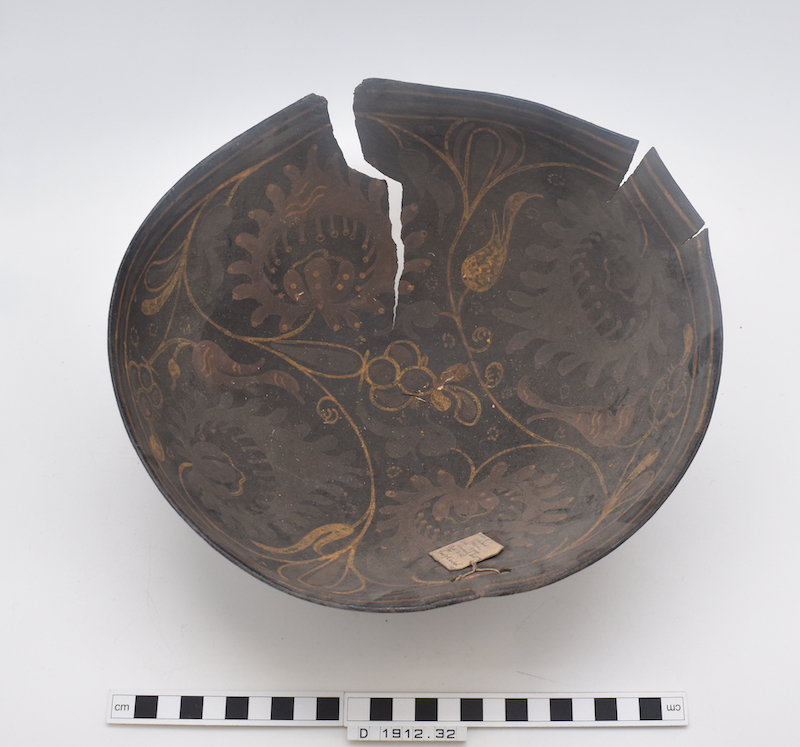
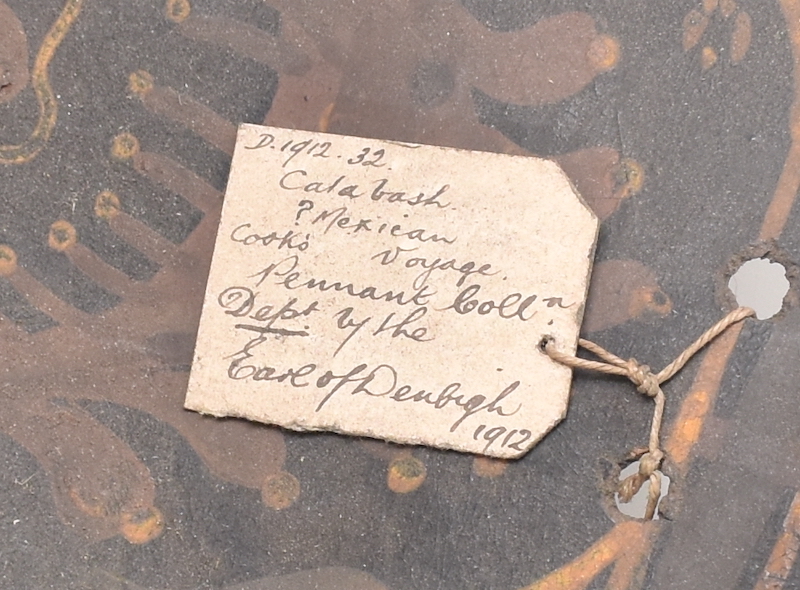
Similarly, a basket (seen below) was seemingly unlabelled when removed from the box and again, had been separated from its context. With careful investigation, we were able to see a small number written on its rim. It had been overlooked due to it blending into the colour of the basket, but was the basket’s IDNO (identification number). Following a careful search of the Museum’s accession registers, we were able to confirm that it was a Palestinian basket, and reconnect it to the database record, which listed the object as missing. The record was updated and the basket reunited with other collections from Palestine.
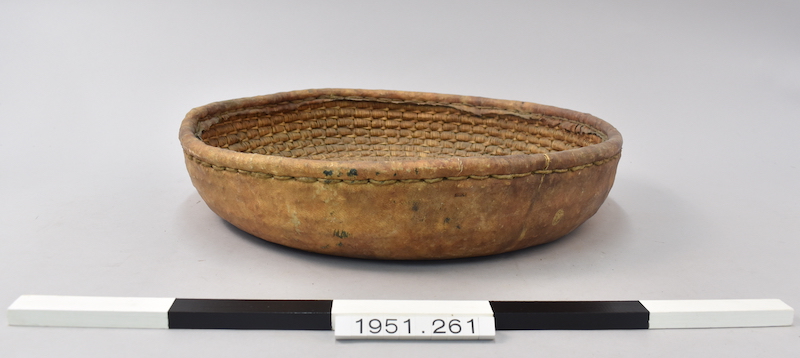
Creating Visibility
The knowledge that the team has gained over the course of the project, along with our own specific interests and experiences, helps to shed light on the origins of some of the objects from the miscellaneous box.
My own social history knowledge helped me to identify a glove stretcher incorrectly identified as African. I undertook a small amount of research to confirm my suspicious, and quickly found that it was identical to many other European examples. It still wasn’t clear if the object was part of the Museum’s collection, as it was not marked or labelled. For now, the glove stretcher has been assigned a TEMP (temporary) number until it’s real number can be identified.
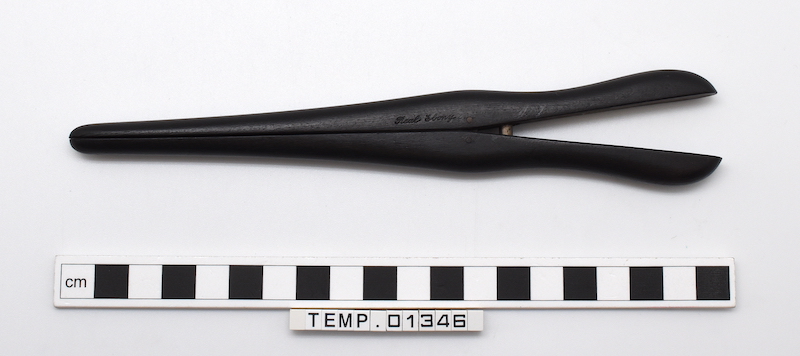
Having recently gone through much of the South America collections, the team was familiar with the small gourds seen below, but we weren’t entirely sure what they were used for. Although they were familiar, these objects had not been marked with any numbers or identifying information. As we could not connect them to MAA’s historical documentation, these objects were also assigned a TEMP number, and are now been stored with other South American collections.
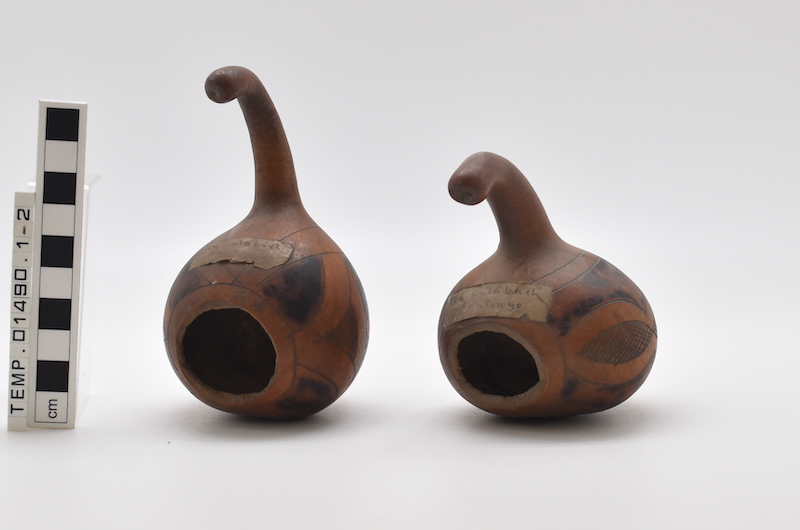
These gourds have actually been photographed the wrong way around as I was initially influenced by the label as to how the gourds were used. In actual fact, the stem should act like a handle. Luckily, Milenko, the project’s workshop assistant, walked past and identified them as cups for mate tea!
Despite this, the hope is by documenting and photographing these disconnected objects (even if they are the wrong way up), we may one day be able to reunite them with any objects currently recorded as missing from the collection.
Louise, another collections assistant on the Stores Move project, was also able to make use of Google lens to identify two more objects; an incense burner – or possibly a lamp from China – and a brass ornament from Borneo. Google Lens brought up similar examples of objects at other museums, and allowed her to connect the ones in our collections to specific countries, getting us one step closer to their museum identities. However, as useful as this technology is, it can only be used for very distinctive objects. It is not as reliable for objects such as tools, weapons or baskets which can have similar features across countries.
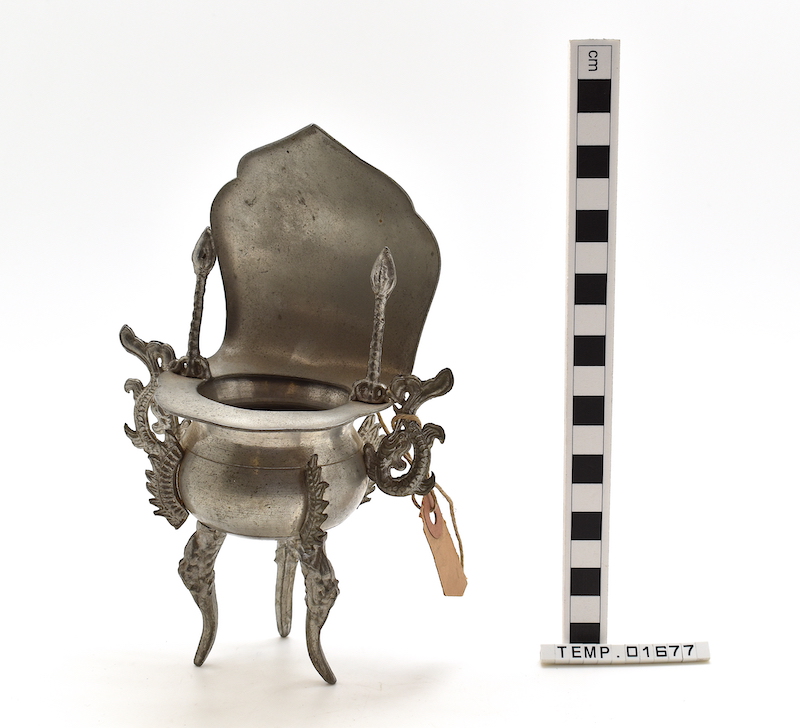
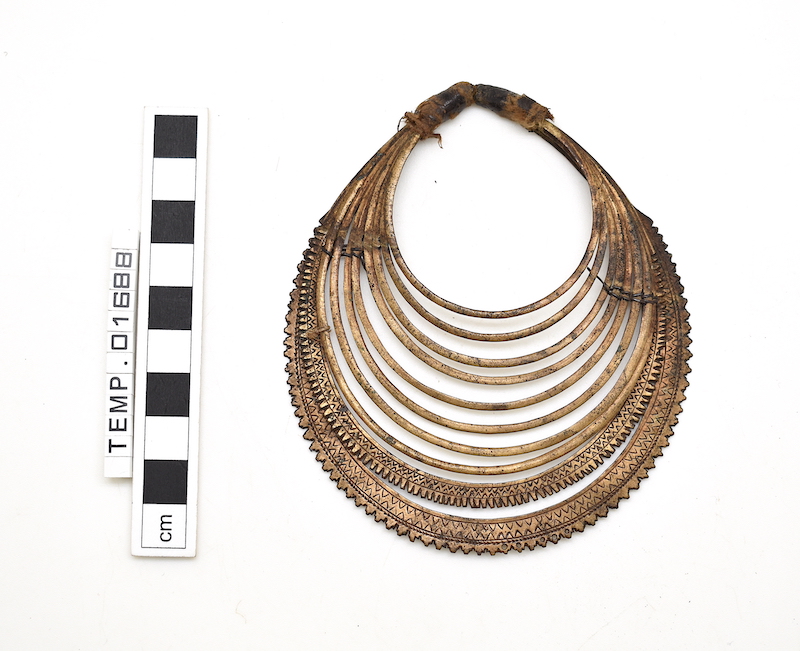
Bits and Pieces
Some objects evade even the most diligent detective work. Many of these are fragments of objects, but others are unique in what they are.
In the images below, TEMP.01663 is complete enough to show it may be part of a loom, but it is unclear what TEMP.01683 is, though the rounded edge suggests it was once part of something. Other examples of fragmentary objects include TEMP.01402 which may be a foot or a cap, TEMP.01534.1-2 which is a fragment of metal and one of red glass, and TEMP.01550.1-2 which may be from personal adornment. All of these, and more, can be found by searching ‘TEMP’ and ‘fragment’ on our online database.
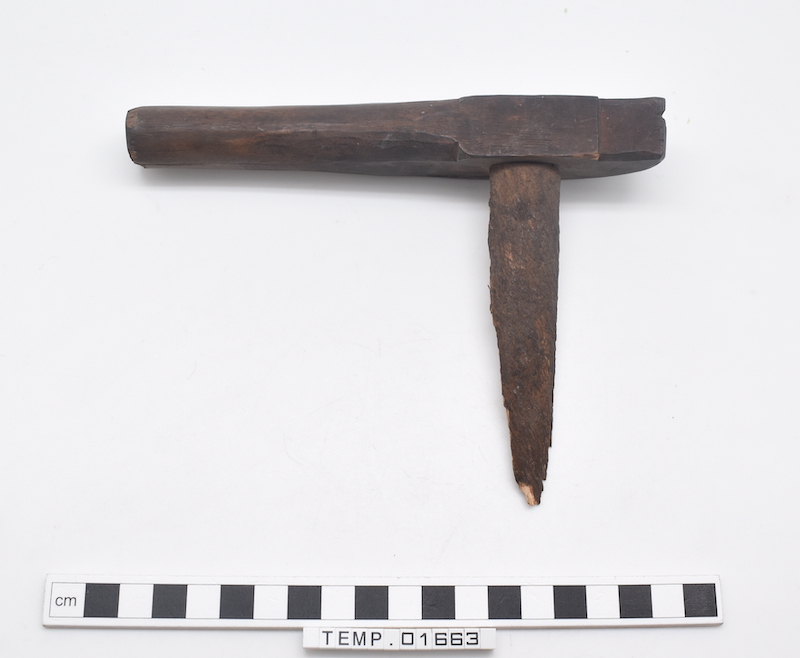
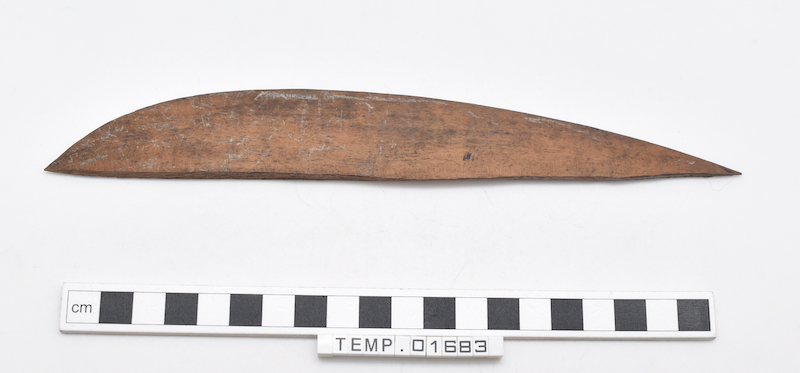
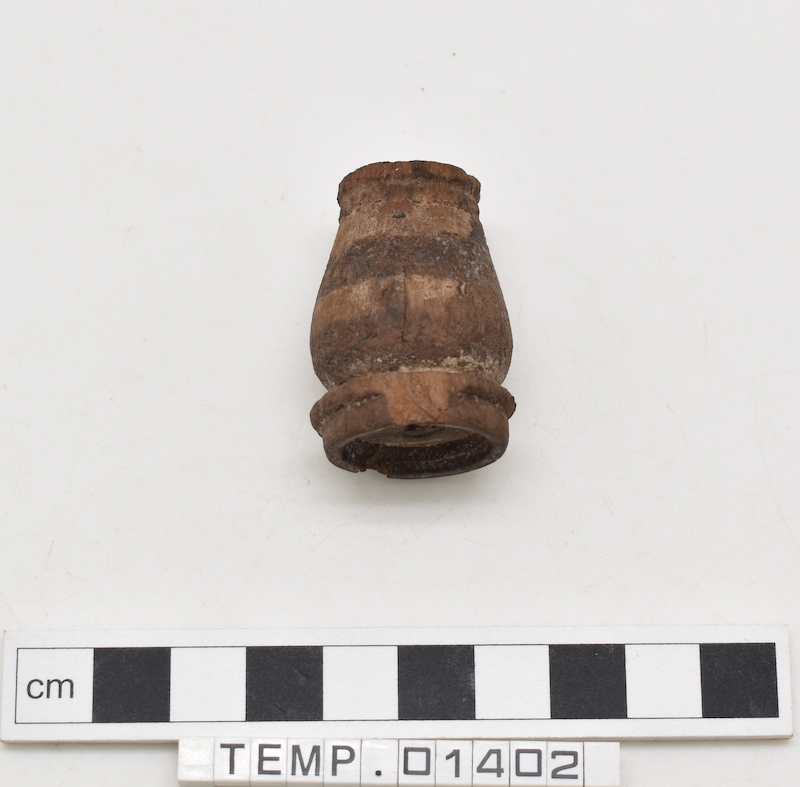
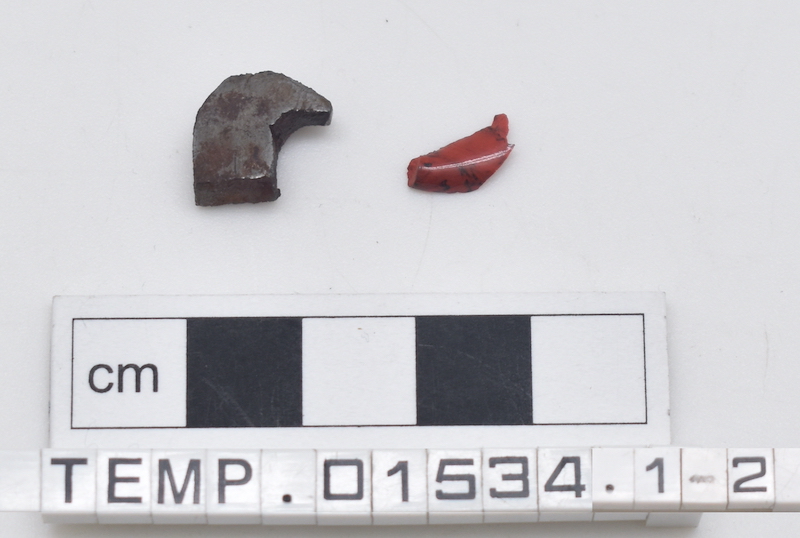
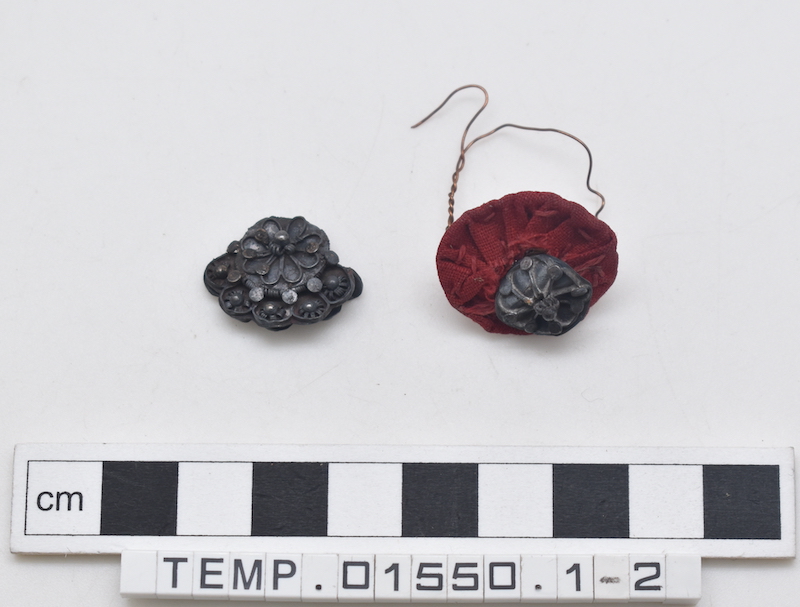
Fragments that get assigned a TEMP number are often more mysterious and harder to identify, so we make sure to record full measurements and take good quality photos, and record any potential clues such as pencil marks, broken edges, or the remains of labels. A lot of work goes into documenting these fragments, so that hopefully they will one day get reunited with the object they once belonged to.
And it does happen. In 2021 the team was able to reunite a detached foot with the figurine (below) as the material was recognized by Katrina who had processed it a year before!
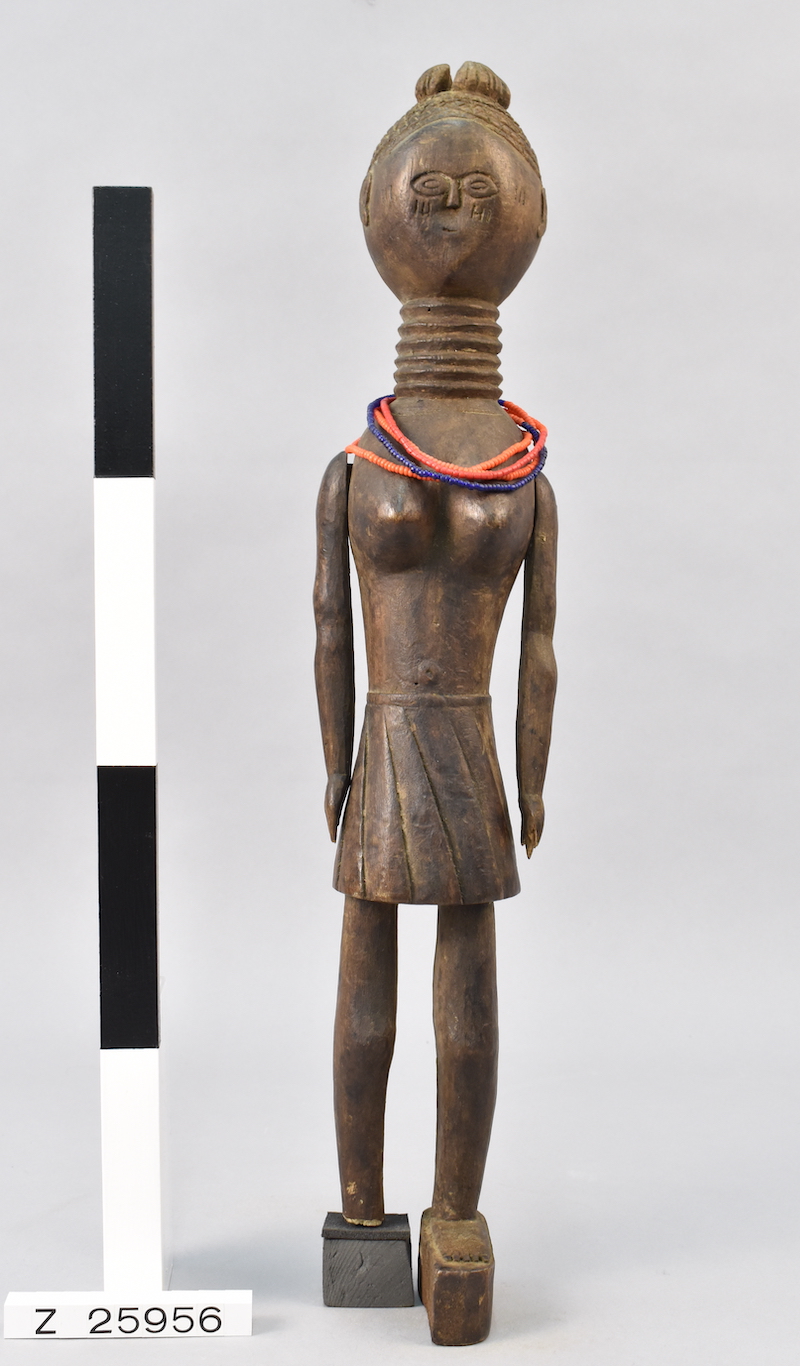
We do as much as we can for these fragments and other TEMP objects, but the Stores Move project is time sensitive. We’re here to make sure the collections make it safely to their new home at the Centre for Material Culture (CMC). The TEMPs often need sustained and deeper investigation and so sometimes we need to accept that we can’t solve a problem straightaway, and must leave it to collections managers, curators, and future projects to continue the work.
Repacking
The final stage of processing the miscellaneous box is to rehome the objects, which is often the most satisfying part of the whole process. We pack the objects into rough groupings, and where possible, into object types; we have been able to create a South American box of gourds as we have found so many. Objects are packed into bags where suitable, or if a label cannot be securely attached (the last thing we want is for them to become disassociated from their numbers again); or safely packed with acid-free tissue puffs into their boxes. By dividing the giant ‘world unprovenanced’ box into smaller boxes, the objects become more accessible for future use.
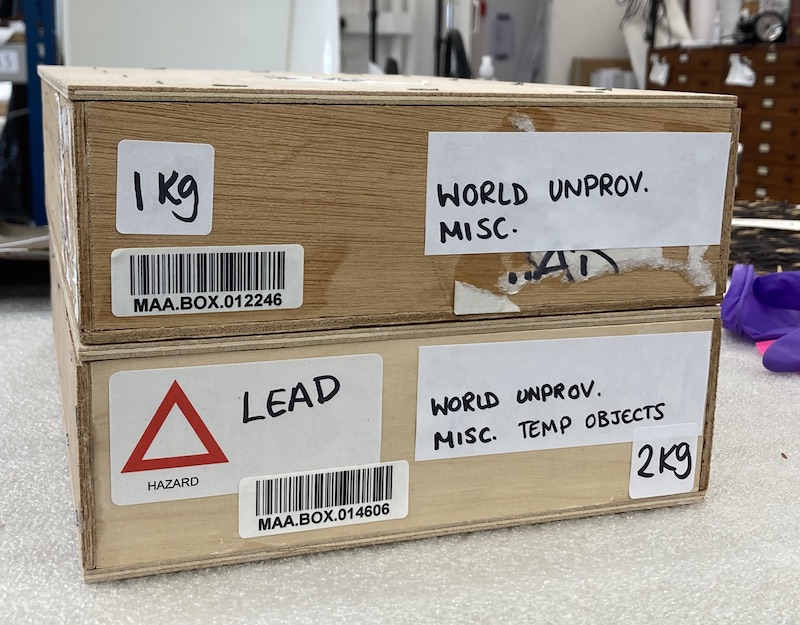
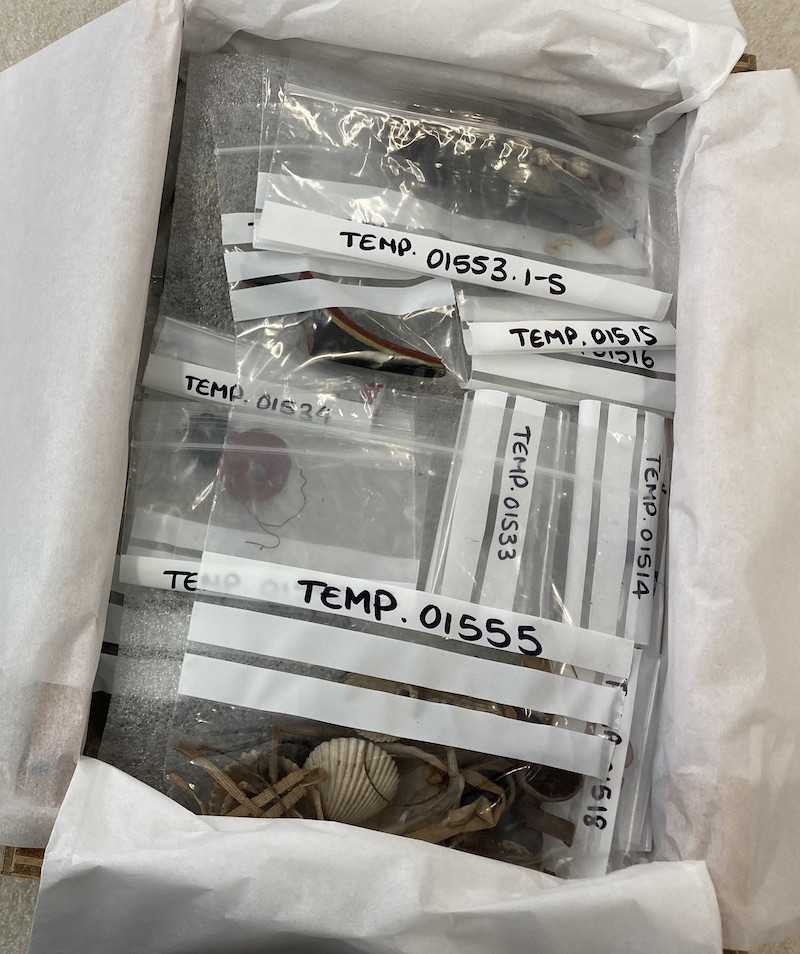
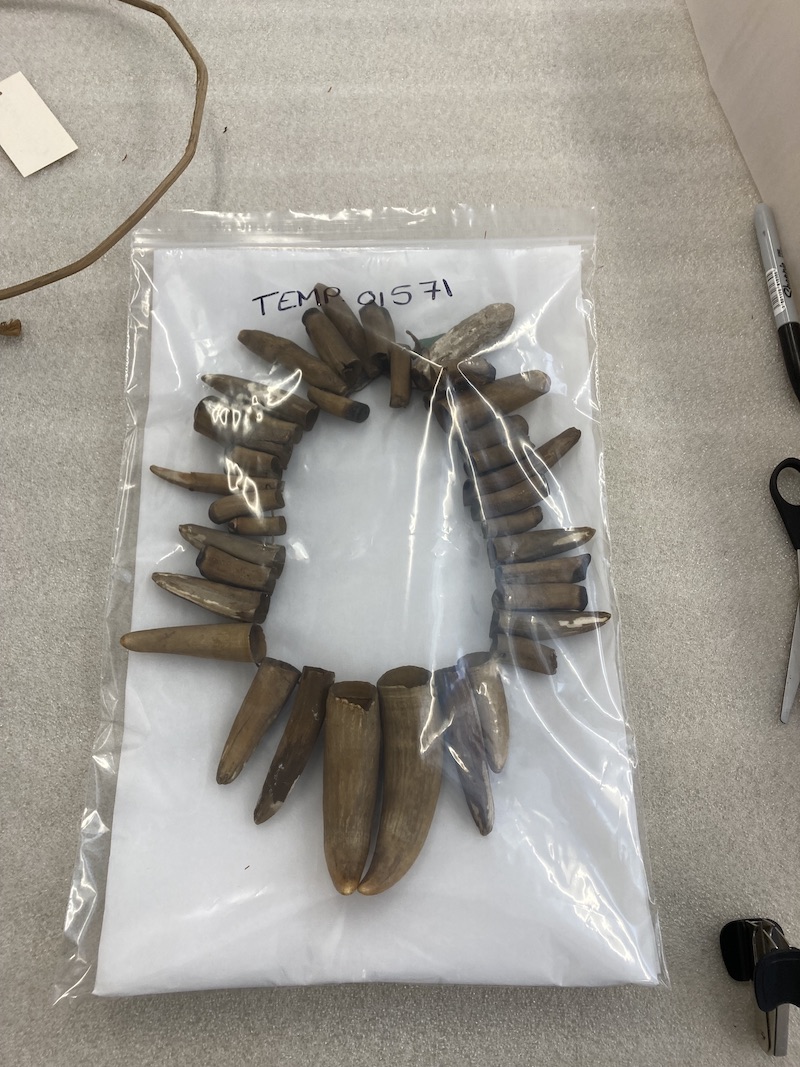
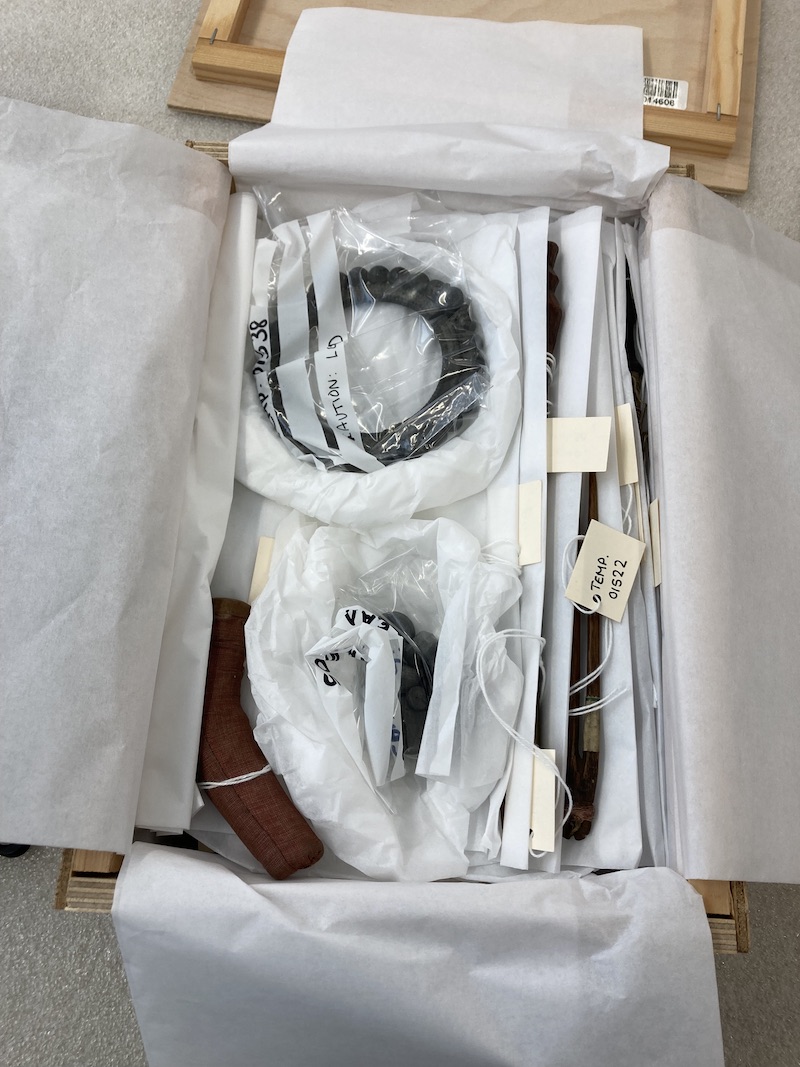
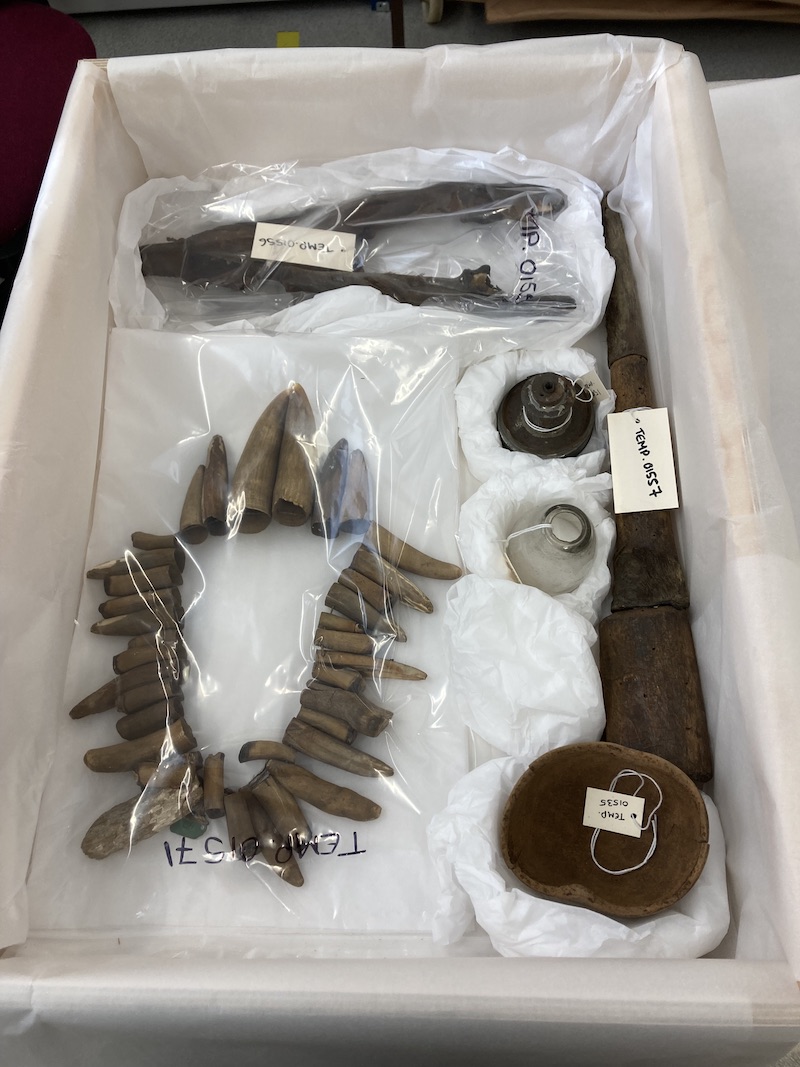
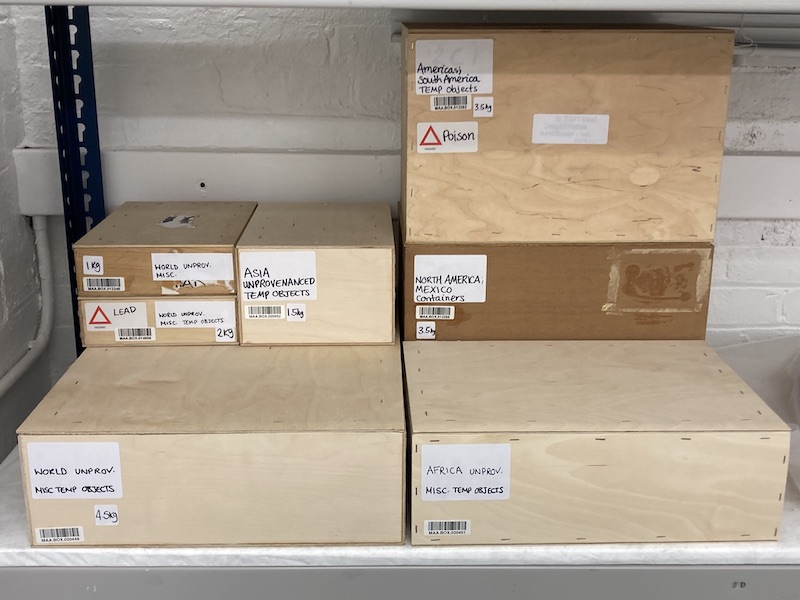
We hope that one day, most of these objects will eventually be reunited with their true numbers, true objects, or even to their geographical contexts, but in the meantime we have made sure the objects are safe and secure as they travel to the CMC. We have taken them as far as we can for the time being, but their stories are certainly far from over. Now that everything is visible on the MAA’s online catalogue, anyone and everyone can help us to make sense of them and where they come from!
All of the objects from this blog, and many more, are photographed and documented on the online database. You can search ‘TEMP’ on our online database.
We’d love your feedback, please send any information or comment on these objects to feedback@maa.cam.ac.uk

